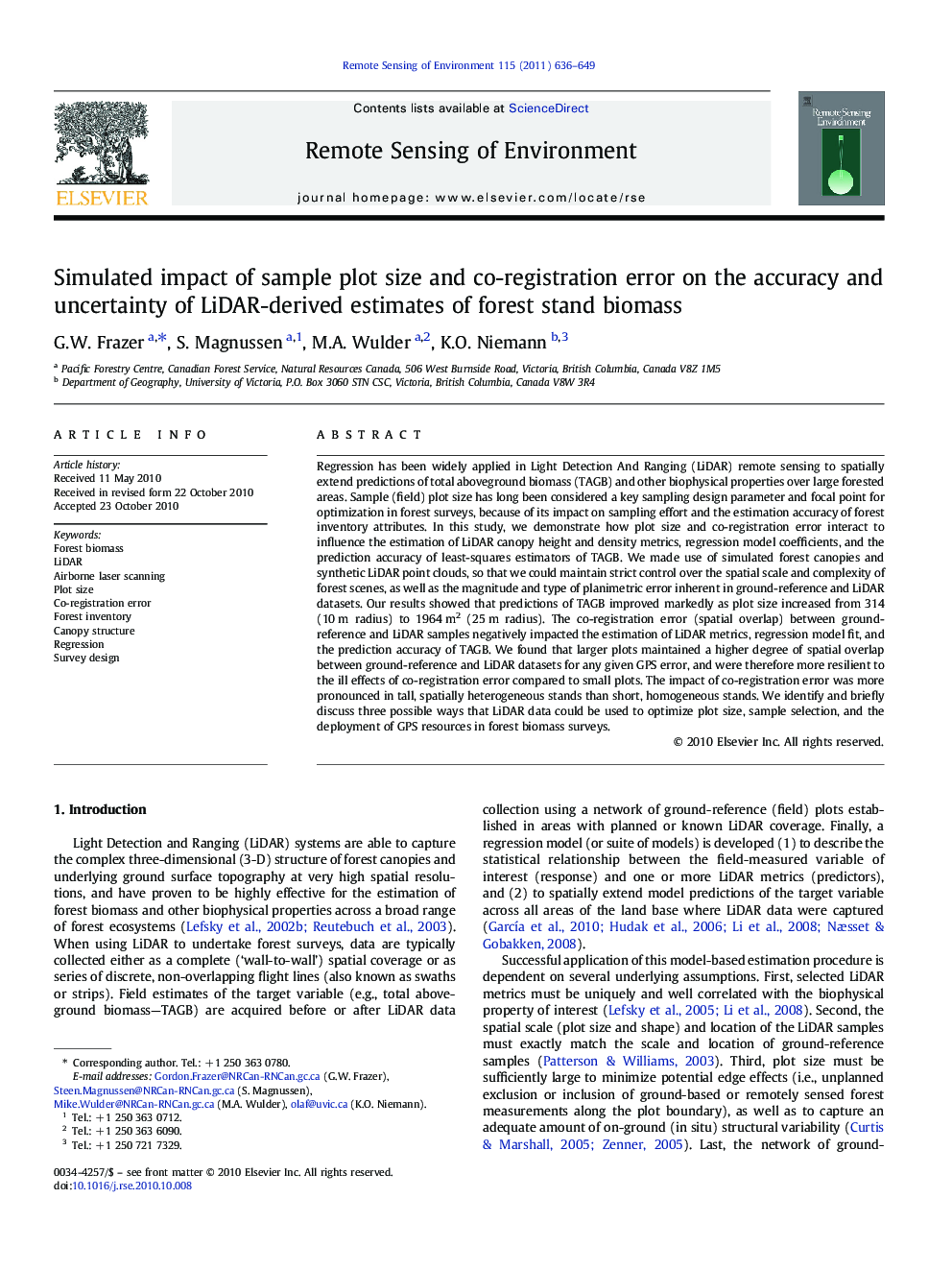| کد مقاله | کد نشریه | سال انتشار | مقاله انگلیسی | نسخه تمام متن |
|---|---|---|---|---|
| 4459663 | 1621295 | 2011 | 14 صفحه PDF | دانلود رایگان |

Regression has been widely applied in Light Detection And Ranging (LiDAR) remote sensing to spatially extend predictions of total aboveground biomass (TAGB) and other biophysical properties over large forested areas. Sample (field) plot size has long been considered a key sampling design parameter and focal point for optimization in forest surveys, because of its impact on sampling effort and the estimation accuracy of forest inventory attributes. In this study, we demonstrate how plot size and co-registration error interact to influence the estimation of LiDAR canopy height and density metrics, regression model coefficients, and the prediction accuracy of least-squares estimators of TAGB. We made use of simulated forest canopies and synthetic LiDAR point clouds, so that we could maintain strict control over the spatial scale and complexity of forest scenes, as well as the magnitude and type of planimetric error inherent in ground-reference and LiDAR datasets. Our results showed that predictions of TAGB improved markedly as plot size increased from 314 (10 m radius) to 1964 m2 (25 m radius). The co-registration error (spatial overlap) between ground-reference and LiDAR samples negatively impacted the estimation of LiDAR metrics, regression model fit, and the prediction accuracy of TAGB. We found that larger plots maintained a higher degree of spatial overlap between ground-reference and LiDAR datasets for any given GPS error, and were therefore more resilient to the ill effects of co-registration error compared to small plots. The impact of co-registration error was more pronounced in tall, spatially heterogeneous stands than short, homogeneous stands. We identify and briefly discuss three possible ways that LiDAR data could be used to optimize plot size, sample selection, and the deployment of GPS resources in forest biomass surveys.
Research highlights
► Field plot size is a key design parameter in lidar forest surveys.
► Large plots produce more reliable ground and lidar measurements.
► Large plots are more resilient to the ill effects of co-registration error.
► Optimal plot size depends on tree size and stand heterogeneity.
Journal: Remote Sensing of Environment - Volume 115, Issue 2, 15 February 2011, Pages 636–649